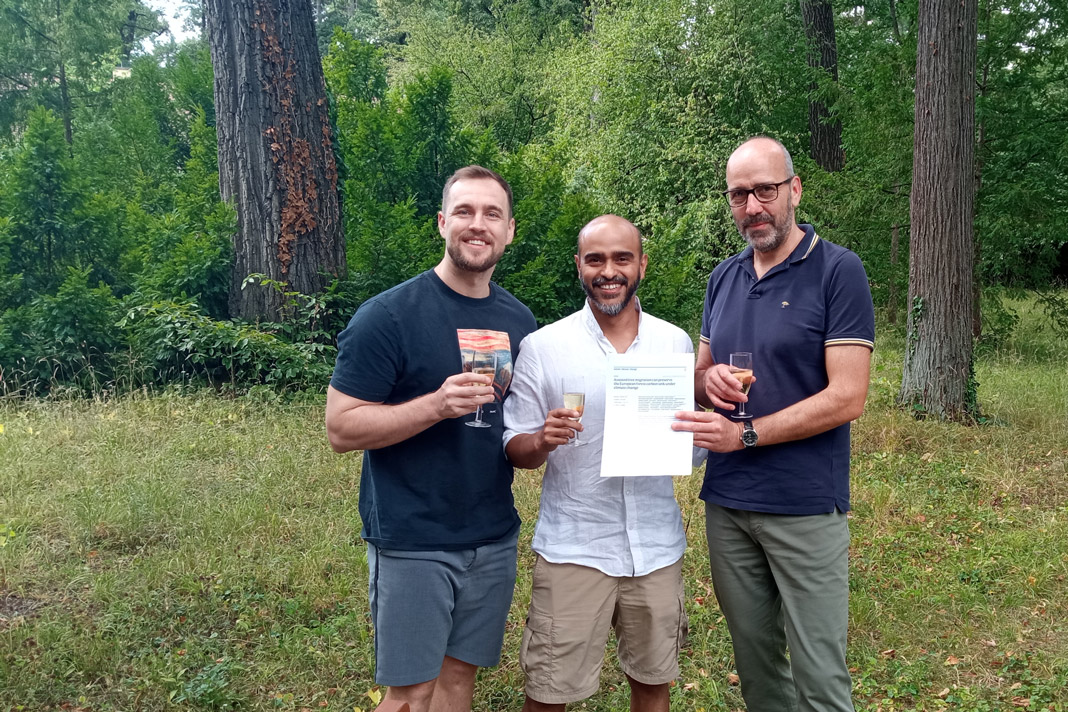Spain implements national legislation on the conservation of forest genetic resources and wild flora
In 2022, Spain approved national legislation on conservation of forest genetic resources following the recommendations of the Pan-European strategy for genetic conservation and EUFORGEN programme. A Royal Decree establishes the planning, coordination and collaboration instruments for in situ and ex situ conservation of the forest genetic resources.
The tool for in situ conservation is the National Network of Genetic Conservation Units (GCUs), which seeks to maintain the intraspecific genetic variation of the main forest tree species throughout their distribution range via the conservation of evolutionary processes. The selected units will be part of the European network implemented in the European information system on forest genetic resources, EUFGIS (Figure 1).
Figure 1. Diagram summarizing the establishment of the Network of Genetic Conservation Units at the National and European levels.
Implementing the Royal Decree requires an important effort of coordination involving actors at the national and regional levels. In particular, the Ministry for the Ecological Transition and the Demographic Challenge works in coordination with the Institute of Forest Science (ICIFOR-INIA, CSIC), the state-owned company TRAGSA and the 17 Spanish autonomous communities (regional governments).
Currently, the proposed Spanish GCU network includes 327 units for 20 forest tree species, while in the long term there will be GCUs for 62 species. The selection involved the following steps:
- GCUs are selected as a first approximation based on the ecological zones at the Spanish level (Provenance Regions, Alia et al., 2009), to identify areas with distinguishable populations.
- Each autonomous community reviews the proposed GCUs and all the actors meet to visit them in situ and gather information. The field work consists first of confirming that the GCUs comply with the requirements of the Spanish Royal Decree: the units must be native populations, with a sufficient size to ensure reproduction, that add value to the network, with a buffer zone and natural regeneration. Then, 25 trees are selected, marked and geolocalized, while the diameter is measured and leaves are collected for genetic analysis. Finally, after each field visit a report is written.
- The selected GCUs are genetically characterized to confirm their representativeness across the National territory.
- The selected GCUs, along with their report, are integrated in a user-friendly GIS Viewer that is updated frequently (developed by F.J. Auñón).
Brief summary of the advances:
- We have sampled a total of 134 GCUs out of the 327. This work is co-financed by the Ministry for the Ecological Transition and the Demographic Challenge, 75% EAFRD funds, the European project FORGENIUS (Horizon 2020 under grant agreement No 862221) and by the ICIFOR-INIA (CSIC).
- We have implemented an analysis of potential threats.
- Outreach material: we have published a leaflet on Genetic Conservation Units and soon a monograph (ready for publication) on genetic conservation of forest tree species.
Perspectives:
- Ongoing genotyping and analysis of GCUs to ensure that we cover all the genetic diversity at the species level. By the end of 2025 at least, 60% of all the GCUs will be genetically characterised.
- Improving databases and threat information of the GCUs to advance in the priorization of ex situ conservation of endangered populations.
- Defining GCUs for more forest tree species.
More info available in English:
National coordinator:
Felipe Pérez Martín
Ministry for the Ecological Transition and the Demographic Challenge (MITECO)
Av. Gran Vía de San Francisco 4 – 6
28005 Madrid (Spain)
EUFGIS Focal point:
Eduardo Notivol Paino
Centro de Investigación y Tecnología Agroalimentaria de Aragón (CITA)
Government of Aragon
Avda. Montañana 930,
50059 Zaragoza (Spain)








